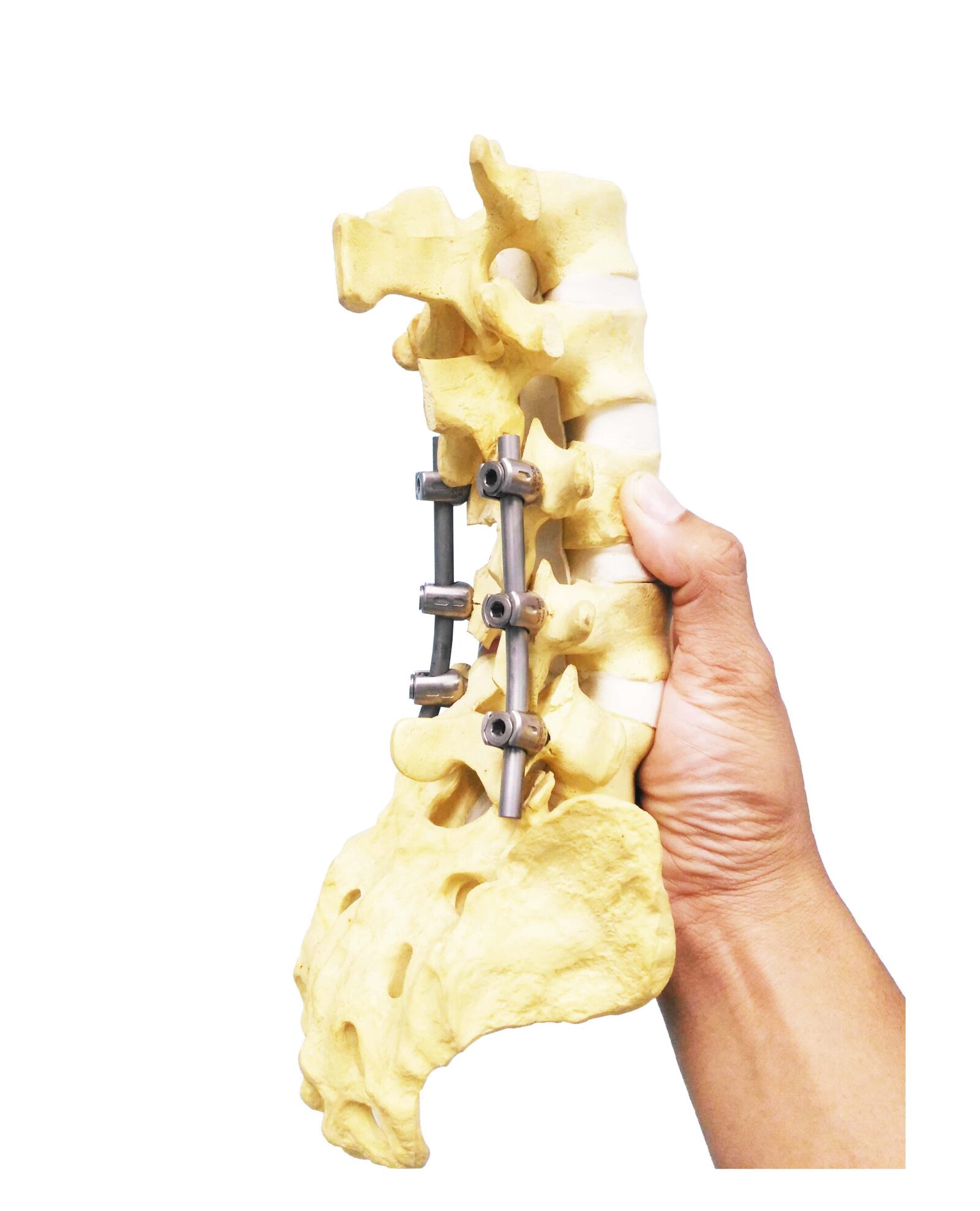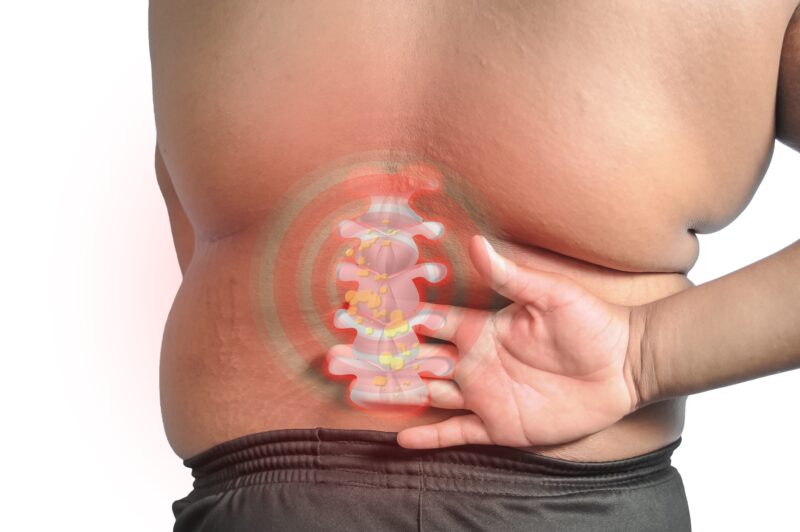Back pain is a common ailment that can range from a temporary inconvenience to a chronic and debilitating condition. When seeking relief, it’s important to understand the difference between temporary and permanent back pain solutions. In this blog, we’ll explore both approaches, their advantages and limitations, and how to make an informed choice based on your individual needs.
Temporary Back Pain Solutions
Temporary solutions are aimed at providing immediate relief from back pain. They address the symptoms but may not necessarily address the underlying causes. Here are some common temporary solutions:
Over-the-Counter Pain Medications:
Non-prescription pain relievers like ibuprofen or acetaminophen can offer short-term relief by reducing inflammation and discomfort. However, they do not address the root cause of the pain.

Hot and Cold Therapy:
Applying heat or cold packs to the affected area can help alleviate muscle tension and reduce pain. These methods are effective for temporary relief but do not provide a permanent solution.
Stretching and Exercise:
Gentle stretching and targeted exercises can help improve flexibility, strengthen muscles, and reduce tension. While these practices can provide relief, they may not eliminate the underlying issue causing the pain.
Massage and Physical Therapy:
Massage therapy and physical therapy can help relax muscles, improve circulation, and promote healing. Regular sessions can provide temporary relief by addressing muscle tension and imbalances.
Benefits and Drawbacks of Temporary Back Pain Solutions
| Benefits of Temporary Back Pain Solutions | Drawbacks of Temporary Back Pain Solutions |
| Immediate relief from acute pain | Focus on symptom management |
| Non-invasive and minimal side effects | Limited long-term impact |
| Accessible and convenient | Dependency on temporary solutions |
| Suitable for mild pain | Masking underlying issues |
| Minimal side effects | Not effective for severe pain |
| Cost accumulation over time | |
| Delayed recovery |
Remember, the appropriateness of using temporary back pain solutions depends on the nature and severity of your pain, as well as the underlying causes. Consulting with healthcare professionals is crucial to determine the best course of action for your specific situation.
Permanent Back Pain Solutions
Permanent solutions focus on addressing the underlying causes of back pain rather than just managing the symptoms. These solutions aim to provide lasting relief and improved long-term well-being:
Medical Intervention:
Depending on the specific condition, medical interventions such as spinal surgery might be necessary to correct structural issues causing back pain. Surgical procedures can provide permanent relief for conditions like herniated discs, spinal stenosis, or deformities.

Physical Therapy and Rehabilitation:
Engaging in a comprehensive physical therapy program can help address muscle imbalances, improve posture, and strengthen the muscles supporting the spine. This approach aims to correct issues causing the pain and prevent its recurrence.
Lifestyle Modifications:
Making sustainable changes to your lifestyle can significantly impact back pain. This includes maintaining a healthy weight, practicing good posture, staying active, and avoiding activities that exacerbate the pain.
Mind-Body Practices:
Techniques such as yoga and Pilates combine physical movement with mental awareness, helping to improve posture, flexibility, and overall spinal health. These practices can provide long-term benefits when practiced consistently.
Pain Management Strategies:
For chronic conditions, pain management strategies like nerve blocks or injections can offer long-term relief by targeting pain signals and reducing inflammation.
Benefits and Drawbacks of Permanent Back Pain Solutions
| Benefits of Permanent Back Pain Solutions | Drawbacks of Permanent Back Pain Solutions |
| Addresses underlying causes of pain | May involve invasive procedures |
| Provides lasting relief and improved well-being | Longer recovery and rehabilitation period |
| Potential for complete pain elimination | Possible risks and complications |
| Improved long-term spinal health | Requires careful consideration and decision-making |
| May prevent recurrence of chronic pain | Financial costs associated with treatments |
| May not provide immediate relief for acute pain | |
| Requires commitment to lifestyle changes |
It’s important to carefully weigh the benefits and drawbacks of permanent back pain solutions based on your individual circumstances and consult with healthcare professionals to make an informed decision about the most suitable approach for your specific situation.
Making an Informed Choice
Deciding between temporary and permanent back pain solutions requires a thorough assessment of your specific situation, pain severity, underlying causes, and long-term goals. Here’s a step-by-step guide to help you make an informed decision:
- Consult Healthcare Professionals: Start by consulting with healthcare professionals specializing in spine health. A primary care physician, orthopedic surgeon, or spine specialist can help diagnose the underlying cause of your back pain and recommend appropriate treatment options.
- Understand the Underlying Cause: Gain a clear understanding of what is causing your back pain. Is it a muscular issue, herniated disc, degenerative condition, or another structural problem? Understanding the root cause will guide you toward the most suitable solution.
- Assess Pain Severity: Evaluate the severity of your pain. If your pain is acute and caused by a minor strain or injury, temporary solutions might suffice. However, chronic or severe pain may require more comprehensive, permanent solutions.
- Consider Long-Term Goals: Reflect on your long-term health goals. Are you looking for immediate relief to manage occasional pain, or are you seeking a solution that addresses the underlying cause for lasting relief and improved spinal health?
- Evaluate Impact on Daily Life: Assess how your back pain affects your daily activities, work, and quality of life. If your pain is significantly limiting your ability to function, a more permanent solution might be necessary.
- Explore Temporary Solutions: If your pain is mild and not related to a serious underlying issue, you might initially try temporary solutions like over-the-counter pain medications, hot/cold therapy, or gentle exercises. Monitor how these solutions affect your pain and overall well-being.
- Consult Specialists: If temporary solutions are not providing sufficient relief, consult with spine specialists again. They can reevaluate your condition and discuss whether permanent solutions like physical therapy, lifestyle modifications, or even surgical intervention are appropriate.
- Consider Risks and Benefits: Assess the potential risks and benefits of both temporary and permanent solutions. Temporary solutions might offer quick relief but only manage symptoms, while permanent solutions target the root cause for long-lasting improvement.
- Review Lifestyle Factors: Consider how lifestyle factors, such as your willingness to commit to exercise routines, make dietary changes, or adopt better posture, will impact your choice. Permanent solutions often involve lifestyle adjustments.
- Seek a Second Opinion: If you’re uncertain about which path to take, don’t hesitate to seek a second opinion from another reputable medical professional. This can help you make a well-informed decision.
- Personal Preference: Your comfort level with different treatment approaches also matters. Some individuals prefer to exhaust non-invasive options before considering more permanent solutions, while others may be open to surgical intervention if it promises substantial improvement.
- Customize Your Approach: Ultimately, the best choice will be one that aligns with your individual needs, preferences, and medical advice. Your decision should reflect your unique circumstances and goals.
Remember, the decision-making process should be guided by open communication with healthcare professionals, a deep understanding of your condition, and a commitment to pursuing the treatment approach that offers the best chance of improving your back pain and overall well-being.
In Conclusion
In conclusion, the choice between temporary and permanent back pain solutions depends on the nature of your pain, its underlying causes, and your long-term health goals. Temporary solutions can provide immediate relief, while permanent solutions target the root issues for lasting improvement. Consulting with healthcare experts will help you make the right choice for your unique situation, ultimately leading to better back health and improved overall well-being.










